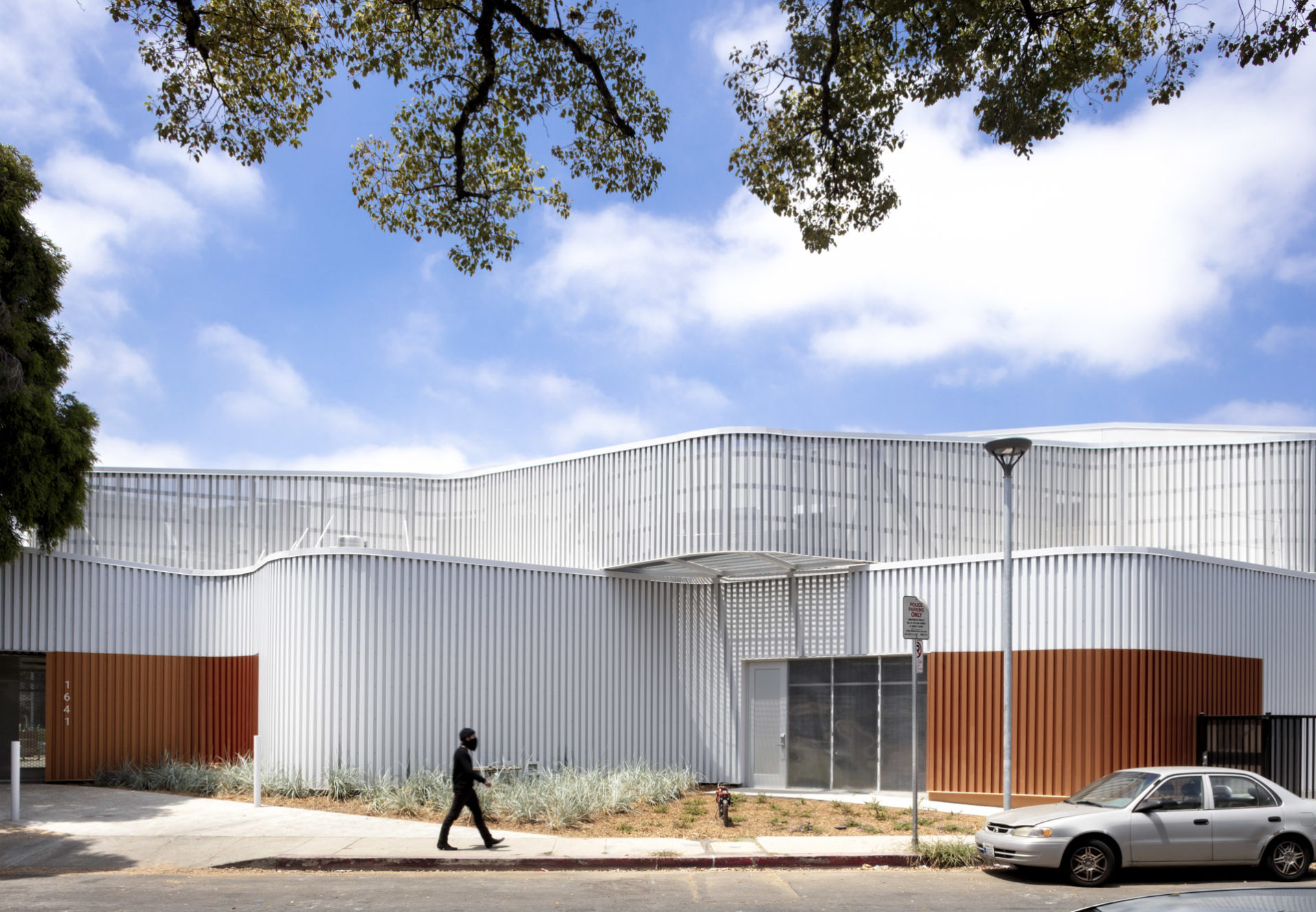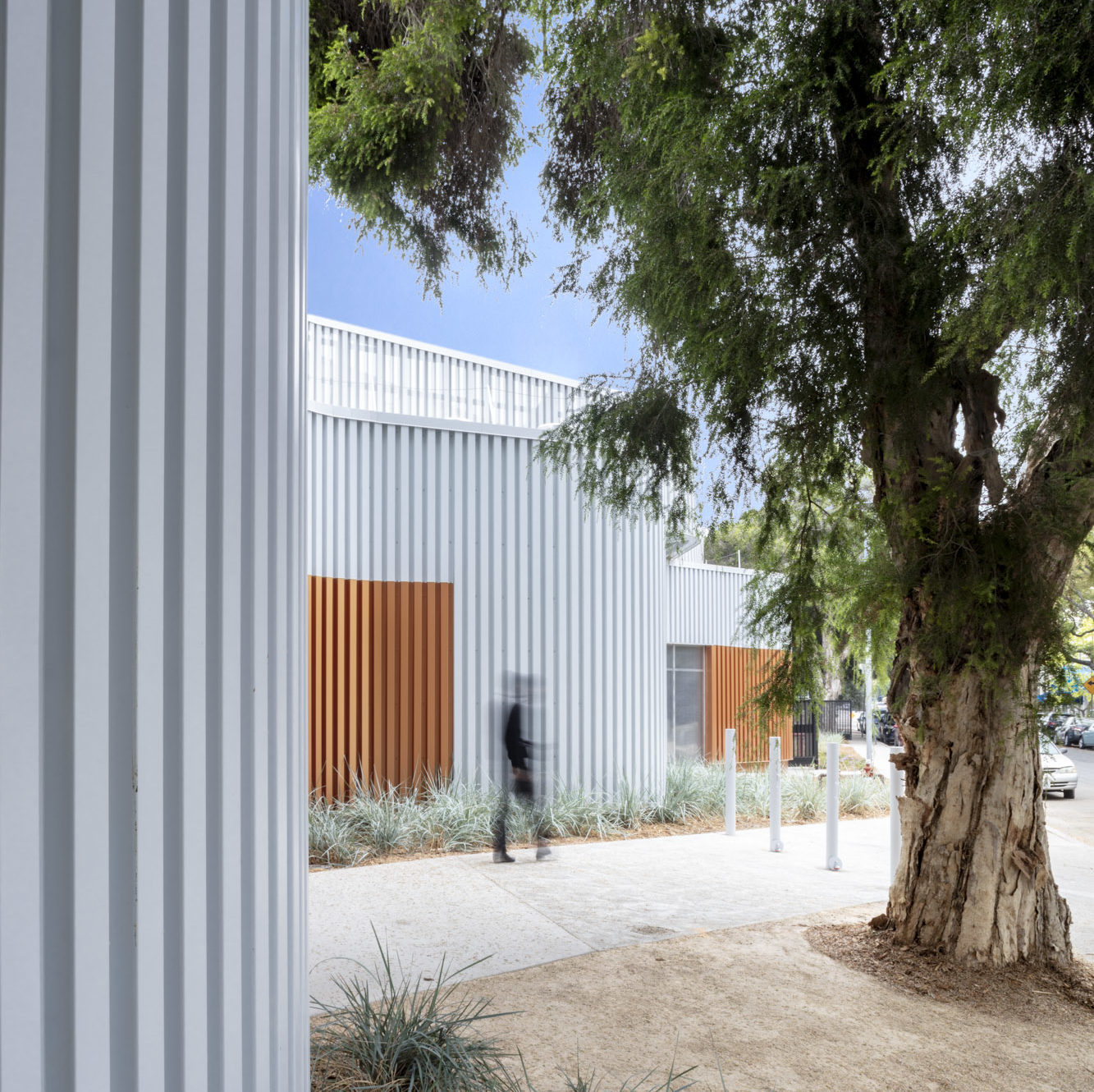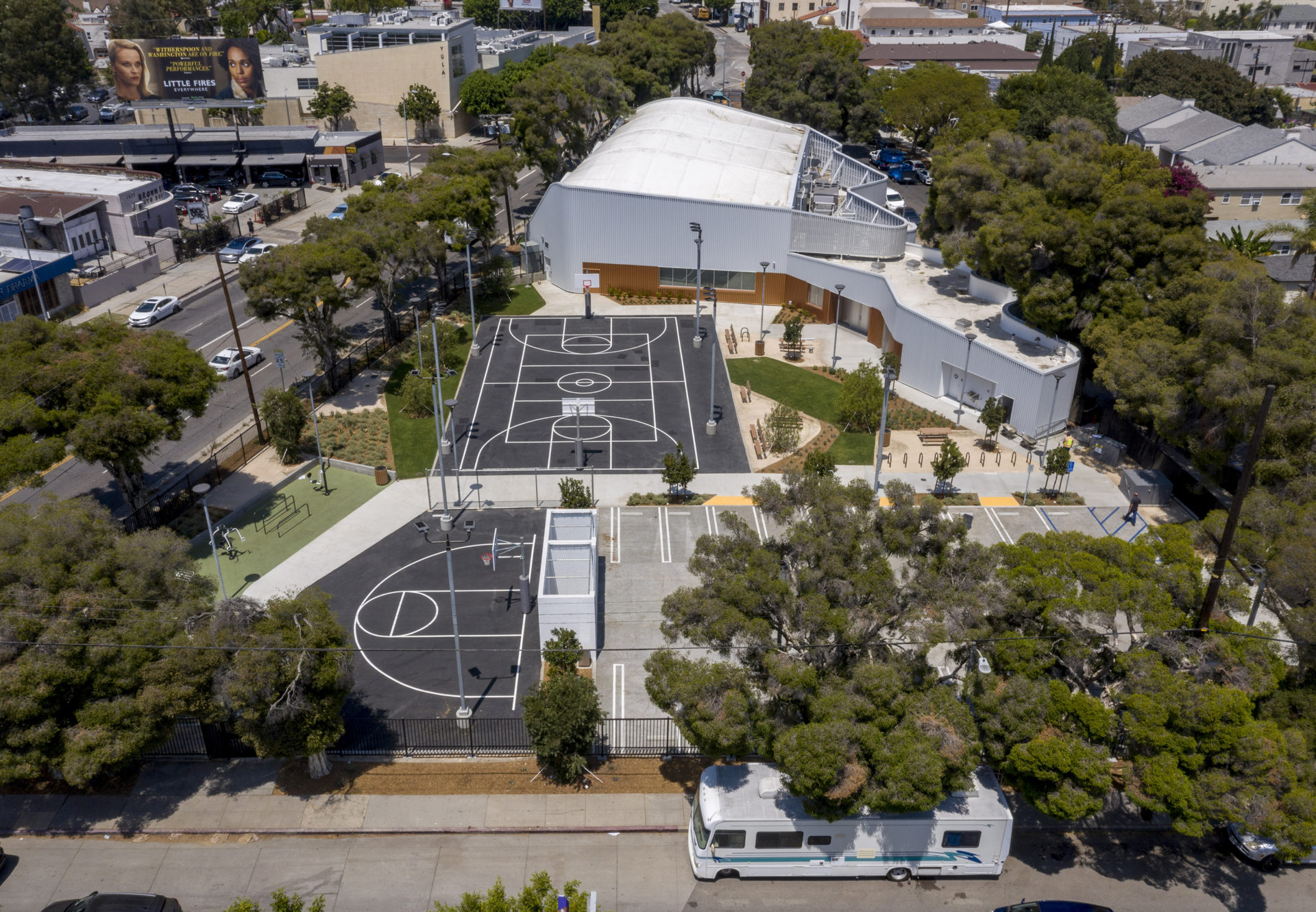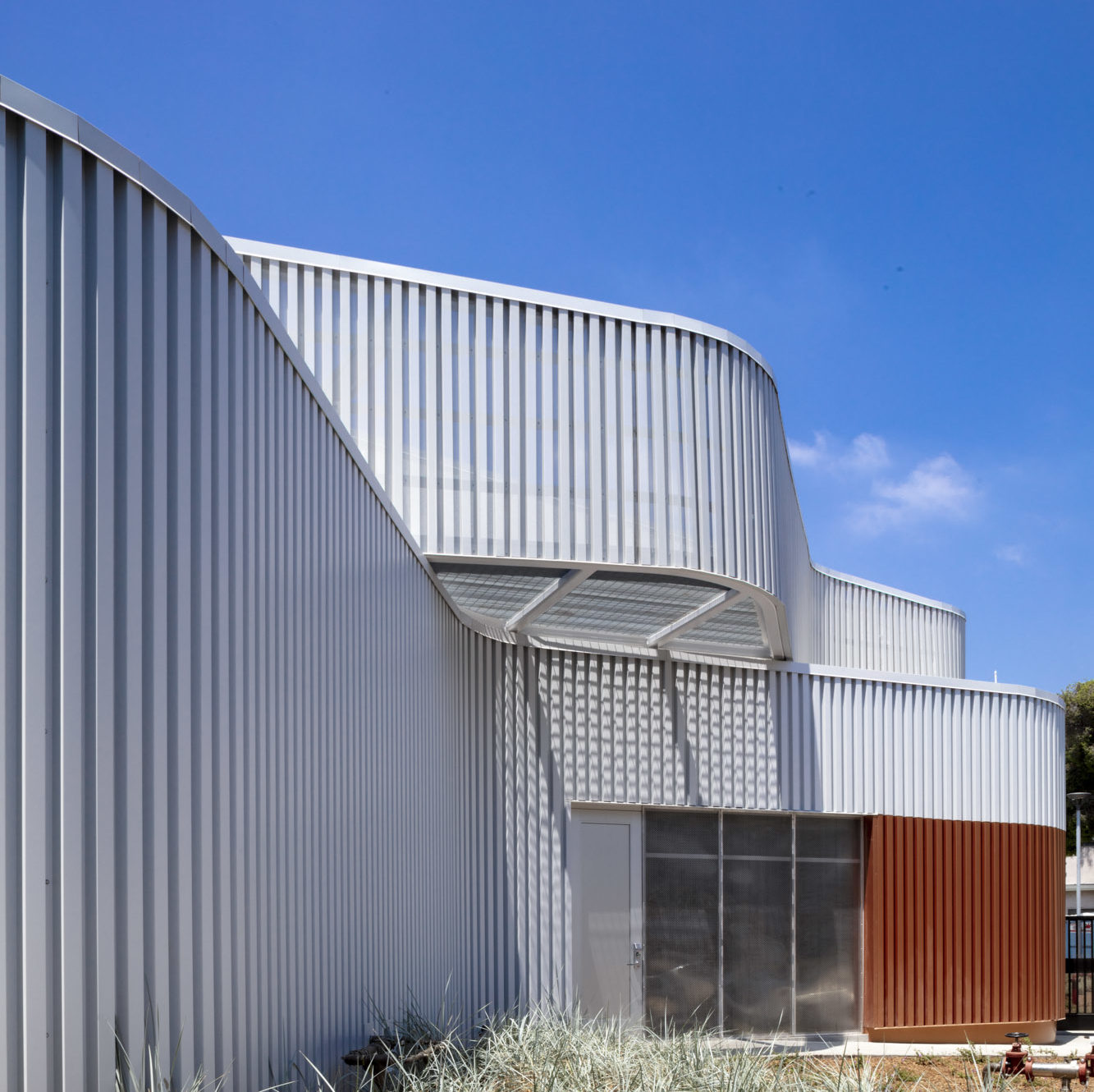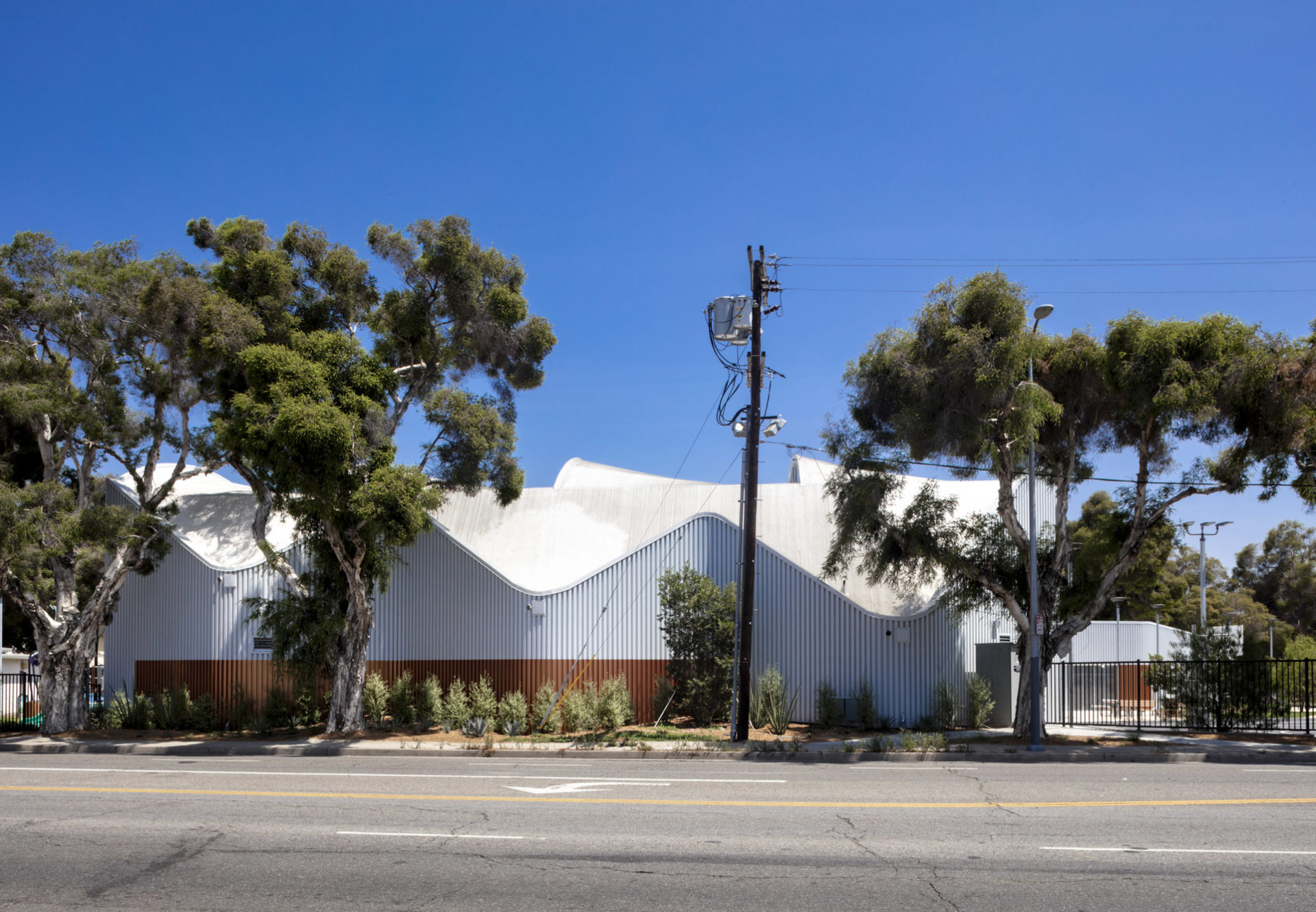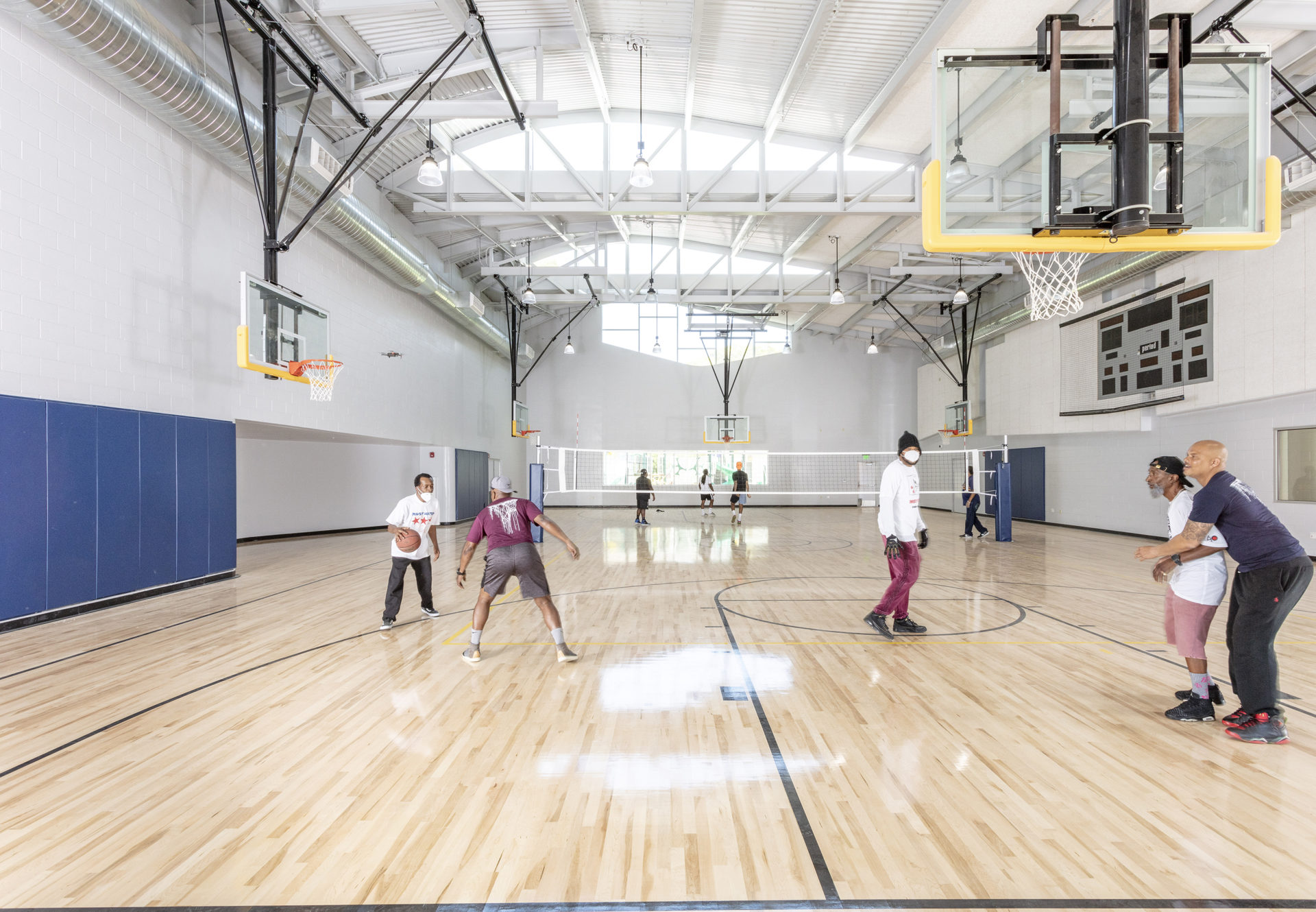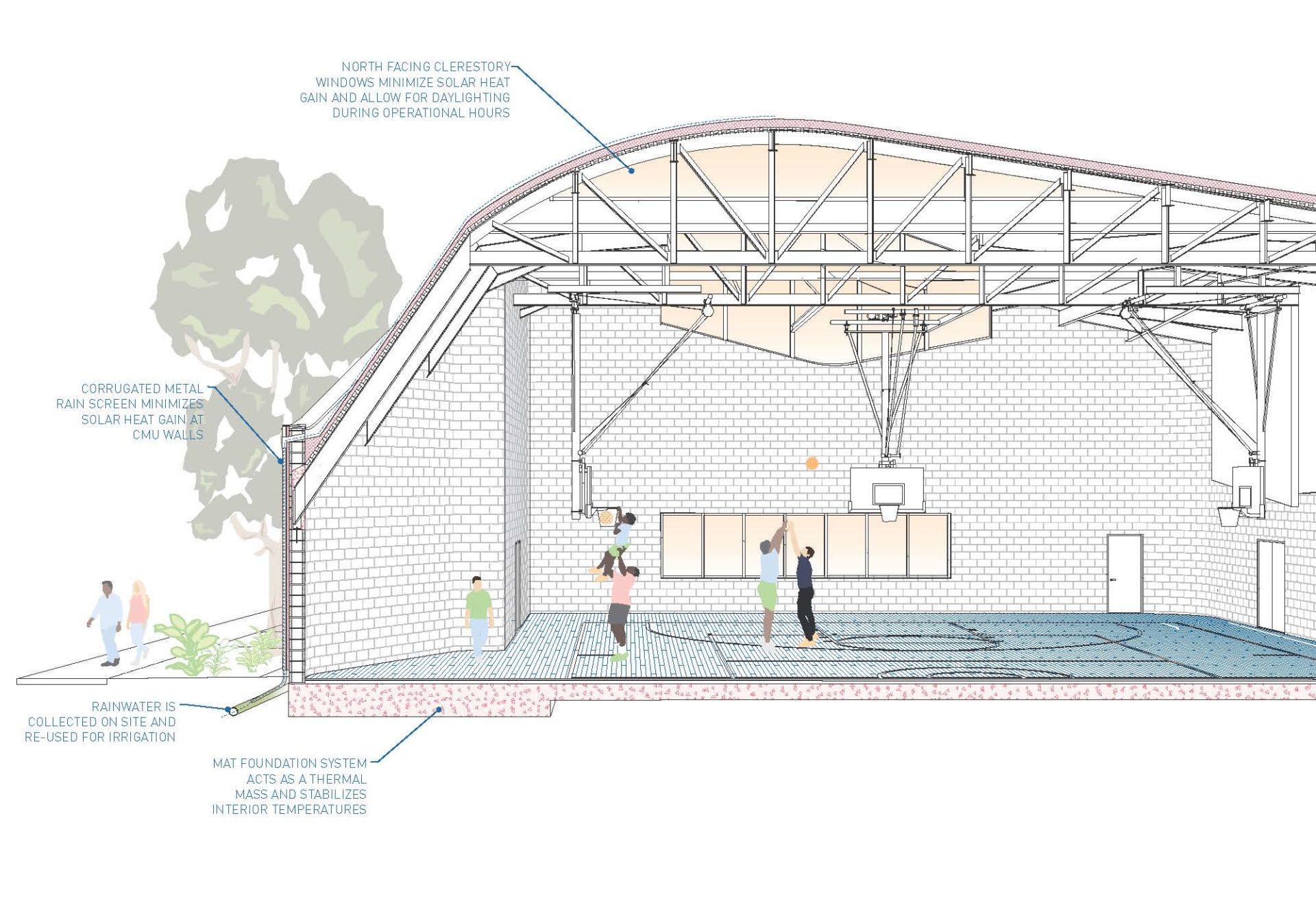Robertson Recreation Center
- Location Los Angeles, CA
- Type Public
- Area 12,000SF
- Completion 2020
- 2020 SCDF Design Award
- 2020 AIALA Design Award
- 2021 Architect’s Newspaper Best in Design Award
- 2022 PCBC Grand Award
This new neighborhood gymnasium and community center serves the South Robertson neighborhood of Los Angeles, replacing a beloved but deteriorated recreation facility. Built on the site of the original “Rob Rec” and funded by the City of LA, the project transforms the beloved but undersized recreation center into a new state-of-the-art gymnasium and community anchor.
In 2014, kdA was selected by the City of LA to develop and design a new recreation center to replace an old gymnasium on the same site. The original center, built on the model of a large manor hall with a vast fireplace, first served as a community gathering space. In the 1960’s the city removed the fireplace and installed a substandard-sized basketball court; although the court was not regulation-sized, the recreation center has an established basketball legacy, counting professional players Nick Young and Cedric Ceballos among its alumni.
The neighborhood surrounding the recreation center is a microcosm of Los Angeles, centered between adjacent social groups and housing types. This heterogenous quality to the area’s urban fabric led to a lengthy public process, and it took two years to build a consensus for the project’s final direction.
The site, an attenuated triangle bounded by busy traffic on Robertson Boulevard, presented limited opportunities for the large rectangular volume of a basketball court, and the surrounding perimeter of mature Melaleuca trees further limited planning options. To engage with the rhythm of the existing landscape, the building’s exterior walls weave at the dripline of the trees to form a ribbon, thereby stabilizing the structure in a manner similar to the famous serpentine walls at the University of Virginia.
The project is organized around a regulation basketball court with supplementary meeting spaces filling the edges of the irregular site.
Designed to be as self-sufficient as possible, the building’s durable interior finish is exposed concrete block to preserve coolness, while its corrugated metal exterior and perimeter of trees provide a self-shading system to minimize the need for air conditioning. Four north-facing trusses spanning the gym are glazed with clerestory windows to provide continuous, indirect sunlight—eliminating the need for artificial lighting throughout the day.
- 2020 SCDF Design Award
- 2020 AIALA Design Award
- 2021 Architect’s Newspaper Best in Design Award
- 2022 PCBC Grand Award
